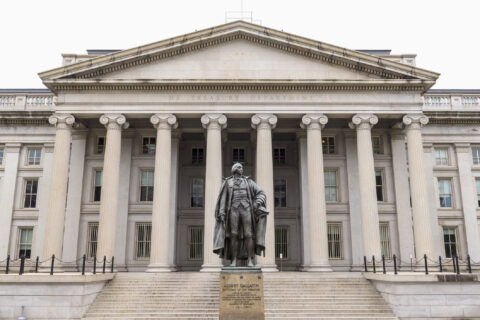The American Rescue Plan Act (ARPA) is a COVID-19 recovery package that contains $1.9 trillion of programming to stimulate the economy and provide relief from COVID-19 related harm. The recovery package includes the groundbreaking Coronavirus State and Local Fiscal Recovery Fund (SLFRF), a $350 billion grant program to aid every level of government, including all 19,000+ municipalities, 3000+ counties, and 50 states. Every city, town and village is entitled to a Coronavirus Local Fiscal Recovery Grant from the $65.1 billion designated for cities. Many cities and towns have already begun receiving grant funds. However, before committing grant dollars to a spending plan, local governments should take appropriate steps to fully understand the impact of coronavirus across different communities, and to familiarize themselves with ARPA implementation resources and federal requirements. The following nine benchmarks, developed by NLC, can be adapted by local governments of all sizes to process ARPA grant dollars. The first five benchmarks should occur early in the process, and local governments can start now even if their grant dollars have not yet been delivered.
Nine Implementation Benchmarks
1. Assess Community Needs
The first step in creating a plan for using SLFRF funds is to conduct an assessment of the recovery needs of your community, and then determining those that are most pressing. Grant dollars may be used to both stabilize local government operations and to intervene in community decline resulting from COVID-19. Once you have analyzed the extent of the harm, using relevant data to determine which sectors or communities experienced disparate impacts, established what requires the most urgent relief, then you will be better positioned to justify grant expenditures under the compliance and reporting requirements of the United States Treasury. Documenting engagement and communication with relevant stakeholders during this process is extremely important, as you will be able to demonstrate that your decision-making process included activities to engage residents directly and identify harm. Join the National League of Cities, Polco and fellow city leaders to hear how you can find success engaging with your community around ARPA.
2. Asset Map Existing Community Resources
In addition to taking a systemic approach to assessing community needs, local leaders should also take a systemic approach to identify community strengths and resources that can be employed to compound the positive outcomes made possible by grant funds. Asset mapping is a process to assess and mobilize what a community already has. Local governments may utilize trusted partners in the community in mays ways, including sub-granting a portion of their dollars to support projects or programs operated by non-profit, philanthropic, or neighborhood-based institutions. Asset mapping will help local leaders get all the right stakeholders to the table from the start, rather than starting over because essential partners were overlooked in the beginning.
3. Review Treasury guidance and NLC resources
NLC has developed resources for dozens of specific policy interventions that are possible under the ARPA local grant program. Other associations, institutions, and consulting groups are also developing resources. Before deciding to follow the recommendations of any third party, it is essential that grant recipients review the source documents published by the Department of Treasury. Every grantee under the program is a “prime recipient”, regardless of whether their grant funds were delivered directly by the Treasury or by their state government. Every city that spends grant funds is directly accountable for ensuring expenditures are made in accordance with Treasury requirements. Essential documents for review are:
- Interim Final Rule
- Treasury FAQ
- Treasury Compliance and Reporting Guidance
- Coronavirus State and Local Recovery Funds
- This page includes resources regarding allocation methodology, accessing funds, and other information/guidance.
Additionally, Treasury has recorded valuable webinars on the Coronavirus State and Local Fiscal Recovery Fund program, which you can review on the program’s homepage.
NLC has also created numerous resources to assist our members with questions about ARPA implementation, including blogs, fact sheets, webinars, trackers, and summaries. These can be accessed at NLC.org/Recovery Recipients can consult these resources if they have questions about various ARPA provisions. NLC has also created a question form, which is linked here, so we can better assist members, improve upon resources, and create new content. These questions will also inform our communication with Treasury.
4. Host Stakeholder Meetings for Community Points of View
Per the Department of Treasury, transparency and public accountability for SLFRF award funds and use of such funds are required for upholding program integrity. Recipients should ensure and document that the use of funds incorporates written, oral, and other forms of input that capture diverse feedback from constituents, community-based organizations, and the communities themselves. Youth not only engage their peers but their guardians as well, making them one of the best return on investments for outreach. Recipients required to submit a Recovery Plan Performance Report will be required to describe these efforts in the report.
The interim final rule governing grant expenditures directs cities to address harm and losses directly stemming from COVID-19, and long-standing or pre-existing disparities that were made worse by COVID-19. This includes setbacks or declines in racial and economic equity. Grantees are incentivized to address disparate harm by having a lower documentation threshold for activities undertaken in Qualified Census Tracts (Link to HUD Qualified Census Tracts), or for activities that provide relief to communities with significant barriers to services, including people of color, people with low incomes, limited English proficient populations, youth, and other traditionally underserved groups. It is vital that diverse viewpoints are sought out and that all relevant community stakeholders are included in the planning process for use of the SLFRF funds.
5. Communicate with Overlapping and Neighboring Jurisdictions for Regional POV’s
Under the ARPA state and local grant program, no jurisdiction needs to come to the table hat in hand. Every jurisdiction receiving grant funds means new possibilities for regional coordination and cooperation. It could mean a fresh start for cities and counties working together to achieve common aims. Connect with overlapping and neighboring jurisdictions to understand how they view their community needs, and if they coincide with those that you have identified for your own. Joint city and county hearings are not out of the question. Council of Government organizations or Metropolitan Planning Organizations can be mobilized to coordinate projects or expenditures. Funds can be pooled from multiple local governments, so this is a terrific opportunity to improve intergovernmental cooperation.
6. Propose a Recovery Plan
Although local governments should use a portion of their grant funds to address immediate crises or restore basic government operations, the prior five steps should be completed before obligating grant dollars to longer-term recovery efforts. After assessing needs and obtaining stakeholder feedback, recipients may create their recovery plan. Given the wide range of activities permitted under the program, no city has a large enough grant to carry out every possible intervention. Recovery plans should provide the justification for which priorities grant funds will support. Funds should be spent and organized by “projects,” which consist of closely related activities oriented towards a common purpose or goal. The purpose or goal of each project should be oriented toward one single expenditure category provided for Treasury’s compliance and reporting guidelines. Projects that touch on multiple expenditure categories should be classified under one most relevant category. If a project or service does not explicitly appear in the rules, it may still be eligible. Treasury created a framework for cities to determine which hypothetical uses are eligible:
- Identify the harmful effect of COVID-19 the activity will address.
- Assess the causal or compounding connection between COVID-19 and the identified effect.
- Assess for disproportionate impact on distressed sectors or populations.
- Determine how to prove the expense produces the expected outcome.
Recipients should refer to Treasury resources for in-depth guidance on eligible uses of the SLFRF. Complicated projects or services may require a legal opinion on eligibility. See NLC’s COVID-19 Local Action Tracker for examples of how other municipalities are using ARPA dollars.
7. Publicize Plan for Community Feedback
Making your plan available to the public and creating sufficient community feedback opportunities (forums, meetings, etc.) is essential before implementation. Proactive intentional outreach promotes accessibility and inclusion, utilizing credible messengers for diverse generations in the creation of the surveys, the distribution and feedback is critical. Connect with local media outlets and request to have your plan publicized in order to further your reach. Receiving community feedback will allow you to address any possible issues raised by the public before the plan is finalized, and make those corresponding revisions if necessary. This will also aid in any response that may be required if a member of the public submits a complaint to the Department of Treasury.
As you make progress on SLFRF projects, NLC also encourages local leaders to host site visits with your congressional delegation. If your municipality has projects underway, you can strengthen your relationship with your member of Congress and demonstrate how this direct local aid was critical for economic recovery.
8. Implement Plan and Track Expenditures
Funds must be obligated by December 31, 2024, and unexpended funds are not subject to recapture or return until December 31, 2026. Given the significant up-front work required to implement a recovery plan, it is reasonable that cities may not make a grant expenditure before the first reporting deadline, and cities are permitted to report zero expenditures. Ultimately, good spending will lead to longer positive outcomes than fast spending. Always keep in mind that SLFRF award funds must be managed to be consistent with Treasury guidance. Recipients must create a written policy to manage subgrantees and evaluate risk of noncompliance. SLFRF are generally subject to requirements in the Uniform Administrative Requirements, Cost Principles, and Audit Requirements for Federal Awards. For more information on this, you can access the NLC blog “Procurement 101: How to Spend ARPA Dollars Wisely”.
Metropolitan Cities
Interim Report
- Includes fund totals by Expenditure Category at the summary level from award date to July 31, 2021
- Report is required even if no dollars have been spent
- DEADLINE: August 31, 2021
Quarterly Project and Expenditure reports
- Initial report from receipt to September 30, 2021 (two quarters)
- Includes Project and Programmatic Details (varies by Expenditure Category)
- DEADLINE: October 31, 2021 (following reports are due 30 days after calendar quarter)
For populations +250K, annual Recovery Plan Performance is required
- Public facing report
- Demonstrates performance and use according to various metrics
- DEADLINE: August 31, 2021 (July 31, each year thereafter)
Non-Entitlement Units of Local Government (NEUs)
Annual Project and Expenditure Reports
- Initial report from receipt to September 30, 2021
- Project and Programmatic Details (varies by Expenditure Category)
- DEADLINE: October 31, 2021 (each year)
Recipients should refer to Treasury’s guidance for detailed reporting requirements. Treasury plans to release further user guides and has also created a template for the annual Recovery Performance Plan. Reports may be submitted through Treasury’s Submission Portal, which can be found on their website.
9. Build in Opportunities to Reassess, Amend, and Pivot Plans in Case of Unanticipated Needs, Unforeseen Setbacks, or Weak Outcomes
Consider the changing nature of the pandemic, and any unexpected issues that could arise as time progresses. Your plan does not need to be a static arrangement, and will more than likely evolve alongside the pandemic. This is a good reason to not obligate every grant dollar immediately, but to hold some amount as unobligated to maintain an ability to change direction if necessary. Make sure to continually evaluate your plan progress and make adjustments as needed in order to ensure that any additional community needs are met, allowing for the strongest outcomes.
Let NLC deliver for you!
The National League of Cities (NLC) is your partner in recovery. This is the time for America to do more than survival we can thrive.
NLC is a strategic partner for local leaders and municipal staff, serving as a resource and advocate for communities large and small. Click the button to learn how NLC can help deliver for your city.
Written with the assistance of:
Elisabeth O’Brien is an intern with the National League of Cities, serving on the Digital Engagement, Communications & Marketing team.
Megan Alberto is an intern with the National League of Cities serving on the Federal Advocacy team.











